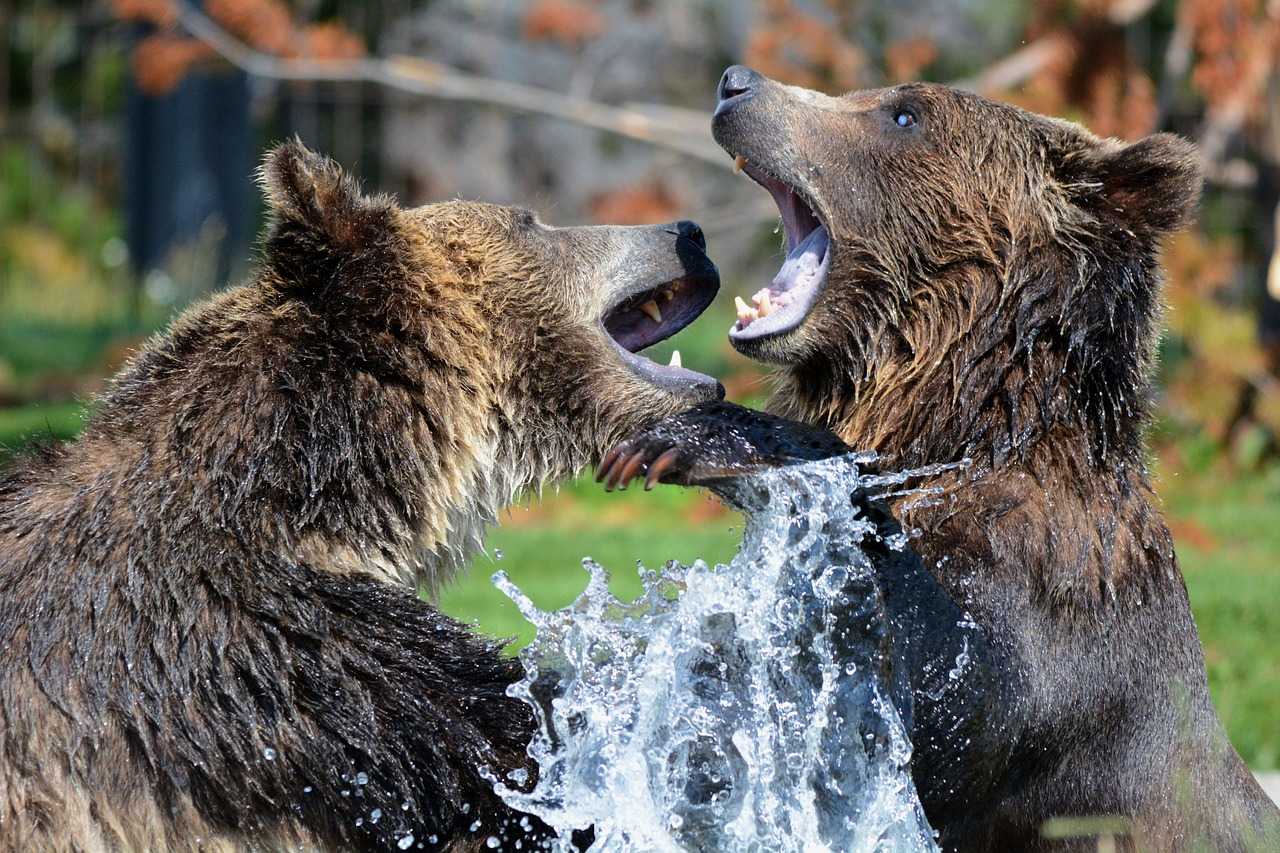
“The grizzly is a symbol of the American wilderness. It is big, powerful, and dignified, walking with a slow and deliberate gait.”
Jack Hemingway, son of the renowned writer Ernest Hemingway, was an Avid Outdoorsman and Conservationist.
Background:
Grizzly bears, scientifically known as Ursus arctos horribilis, have a rich and captivating history that spans across North America and parts of Eurasia. They have long been an integral part of various indigenous cultures, symbolizing strength, wisdom, and a deep connection to the natural world.
North American Grizzly Bear (Ursus arctos horribilis):
The North American grizzly bear is one of the most iconic subspecies, inhabiting the vast wilderness of Alaska, Canada, and some regions of the United States. These bears are renowned for their imposing size, with males weighing up to 1,500 pounds (680 kilograms) and standing around 8 feet (2.4 meters) tall when on their hind legs.
Kodiak Bear (Ursus arctos middendorffi):
The Kodiak bear is a unique subspecies of grizzly bear found exclusively in the Kodiak Archipelago of Alaska. They hold the distinction of being the largest subspecies, with some individuals reaching a staggering weight of over 1,500 pounds (680 kilograms). The Kodiak bear’s incredible size is attributed to the abundance of food available in their coastal habitat.
Siberian Brown Bear (Ursus arctos arctos):
The Siberian brown bear, also known as the Eurasian brown bear, is the counterpart of the North American grizzly bear in Eurasia. These bears inhabit the remote and rugged regions of Siberia, enduring harsh climates and vast expanses of wilderness. While they share many characteristics with their North American counterparts, Siberian brown bears tend to be slightly smaller in size.
Grizzly bears have faced significant challenges throughout history, including habitat loss, hunting, and conflicts with humans. Efforts are underway to protect and conserve these remarkable creatures, ensuring their survival for future generations.
By exploring the history and background of grizzly bears, we gain a deeper appreciation for their importance in the natural world and the need to protect their habitats. Join us on this virtual journey to learn more about these awe-inspiring animals and the vital role they play in our ecosystem.
Quick Facts:
- Grizzly bears can weigh up to 1,500 pounds (680 kilograms), making them one of the largest land mammals.
- Their scientific name, Ursus arctos horribilis, translates to “horrible northern bear” due to their intimidating presence.
- Grizzlies are excellent swimmers and can cover long distances in water.
- Their diet mainly consists of plants, berries, nuts, and occasionally fish or small mammals.
- These bears possess an incredible sense of smell, allowing them to detect food from miles away.
- Grizzly bears have a distinctive hump of muscle on their shoulders, which helps them dig and gives them additional strength.
- They hibernate during winter, entering a state of reduced activity to conserve energy.
- A grizzly bear’s lifespan is around 20 to 30 years in the wild.
- These bears have non-retractable claws that can be up to four inches long.
- Grizzlies play an essential role in ecosystems by dispersing seeds and controlling populations of prey species.
Fun Facts:
- Grizzlies have been known to perform playful acts such as sliding down snowy slopes.
- They have a wide variety of vocalizations, including growls, roars, and huffs.
- Grizzlies are excellent tree climbers despite their massive size.
- These bears have an acute sense of hearing and can detect sounds from far distances.
- Grizzly bear cubs are born small and helpless, weighing only about a pound at birth.
- They have been observed engaging in elaborate courtship rituals during mating season.
- Grizzlies have an exceptional memory and can remember food sources from previous years.
- These bears have a unique digging technique called “rooting,” which involves flipping rocks and logs to find insects and grubs.
- Grizzly bears are considered a keystone species, meaning their presence greatly impacts the overall biodiversity of their ecosystems.
- Despite their fierce reputation, grizzly bears are typically solitary animals, except when it comes to mothers with cubs.
Fun Facts for Kids:
- A grizzly bear can run as fast as a racehorse, reaching speeds up to 35 miles per hour (56 kilometers per hour)!
- Grizzlies love to swim and can paddle in water for long distances.
- Their fur comes in various shades, including brown, blonde, and even white.
- A baby grizzly bear is called a cub and stays with its mom for about two years.
- These bears have a great sense of balance and can stand on their hind legs to reach high places or to appear larger when they feel threatened.
- Grizzly bears have an excellent sense of smell, and their noses are 100 times more sensitive than a human’s!
- They have a special membrane called a nictitating membrane that protects their eyes while swimming or digging.
- Grizzly bears love to scratch their backs on trees, leaving behind distinct marks.
- These bears have a special adaptation in their paws called “plantigrade” walking, where they walk on the soles of their feet, just like humans.
- Grizzly bears have a special dance called the “bear wiggle.” They wiggle their bodies and sway from side to side as a way to communicate and show excitement.













